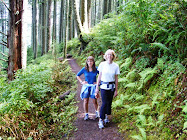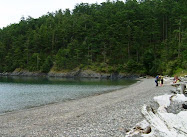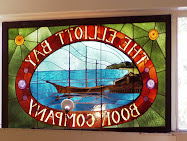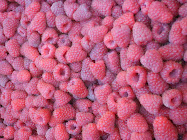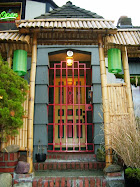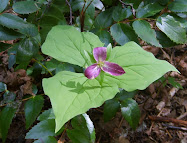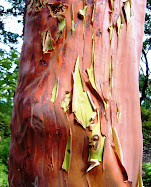The Northwest (Seattle and Portland, my hemisphere) felt like such a backwater after I'd had a taste of Paris, London, and New York. While traveling through Europe after spring quarter abroad, I had to explain to Europeans that Seattle and Portland were on the west coast of the United States, "north of San Francisco."
Times sure have changed.
Today Seattle is experiencing explosive growth, and people are pouring in from all over. Almost every day I meet fresh young faces (and some middle-aged) who have moved here in the last few months or years. Many don't even know anyone here when they arrive.
Besides techies (Amazon, Microsoft, Expedia, etc.), I'm meeting newly transplanted baristas, hairdressers, sales clerks, poets (okay, baristas and sales clerks :), many of whom live in shared housing because this city is so expensive.
To say that Seattle is experiencing growing pains is an understatement.
 |
| Some joke that Seattle's new city bird is the crane. |
The Not So Good
Our major roads and highways are clogged much of each day with crazy-making traffic, and our developing transit system will take well over a decade to catch up with demand. The City isn't managing its growth all that well. The cost of living is shooting skyward (the median Seattle income is less than the income estimated to maintain a comfortable life here), squeezing out the lower and middle classes. Charming and quirky low-rise buildings and homes are being torn down and replaced with often not-so-charming big boxes. The pollutant load into our waters is growing. And the list goes on.
As a Seattle-born, Portland-raised, lived-in-the-Northwest-most-of-my-life gal (I lasted less than 3 years on the East Coast; I needed REAL mountains nearby), I'm finding all this rapid change unsettling. Our wonderful corner of the world, which I didn't fully appreciate fresh out of college, is totally discovered.
On the map. The word is out.
(Lest I be insensitive, my sympathies to the native peoples who lived here for millennia before us European-American interlopers arrived and mostly destroyed their world/lifeways. My ancestors only landed here 148 years ago.)
 |
| Pioneer Square, Seattle |
It's inevitable that cities change, evolve, grow or shrink, look different than they did 50, 100 years ago. Everything is constantly changing. That's life on Planet Earth.
While the change has been building, seemingly overnight it feels...different around here.
Often I hear people refer to "Pike's Market" instead of Pike Place Market. Or radio announcers tell us to take "the 405" (CaliforniaSpeak) instead of just 405.
It's much harder to find relative solitude in nature on the most beautiful and relatively close-in hikes in the Cascades on a weekend. It's often a steady stream of humanity and dogs on popular trails, sometimes with music blaring from an Ipod attached to a belt or pack. Litter (wrappers, food, etc.) is increasingly common along the trail. Parking at the trailhead? Good luck if you arrive after about 8 a.m.
I have to admit this rapid growth is starting to bother me. Mostly it's the traffic and crowds; our infrastructure isn't in place yet to sustain the quickly rising population. But I don't like hearing myself sound like a cranky curmudgeon.
The Good
Change keeps us fresh and alive. With all the influx of talent and energy, there's a vibrancy in the region that's new. Wonderful restaurants and cafes, scads of great little coffee shops/bakeries, and lots of cool bicycle shops are opening around the city.
 |
| Coyle's Bakeshop, Greenwood neighborhood |
And the Seahawks! When we went to the Super Bowl after the 2005 season, the national media treated us like Seattle was in a foreign country. In 2014, much different story. We're cool now!
Many of my good friends migrated to the region from places like Pennsylvania, Illinois, New Mexico, Michigan, and California. My life wouldn't be as rich without them to share local adventures and good conversation over coffee/tea/meals.
Some like UrbanVisions, a sustainable real estate development firm with an environmental/green ethic, are re-imagining the city with creativity, vision, and energy. Because growth is happening and will continue. (We just wish everyone had the same vision)
And despite it all, on most days I still usually feel like this living in the city of my birth:
So please, if you catch me kvetching (a very un-Seattle word) too much about traffic or crowds on the trail, give me a gentle nudge. Seattle and the whole region needs our thoughtful input on maintaining livability with the crazy growth. Complaining only goes so far; constructive criticism is better.
As Bob says:
You'd better start swimming or you'll sink like a stone
'Cause the times, they are a-changin'....
How about you? (You really read all the way to the end here?)
Are you a lifelong Northwesterner? Moved here recently or years ago? What do you think about the changing Seattle/Northwest? Millennials, does it look different from your perspective?
I'm truly interested in hearing what you have to say. Jump in with a comment below!
Happy trails and thanks for visiting Pacific Northwest Seasons! In between blog posts, visit Pacific NW Seasons on FaceBook, Twitter, and Instagram for more Northwest photos and outdoors news.
 |
| Bainbridge-bound ferry from downtown Seattle's Colman Dock ferry terminal |
 |
| Bring back Galaxy Gold, the Space Needle's original color! |
Make Your Voice Heard
There are some big plans in the works that will shape the future of Seattle/the region. While the Seattle Comprehensive Plan Update has already been drafted and the comment period is closed, there will still be opportunities for public involvement through 2016. Sound Transit, the Puget Sound region's light rail transit agency, is putting together a major funding initiative (ST3) for the fall 2016 vote. For more information and ways to get involved, click here.


















































